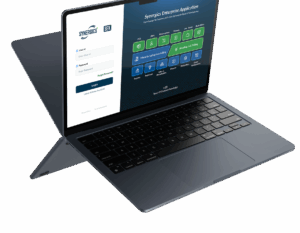When you hear the term BOM, it often sparks curiosity about its full form and significance, particularly for professionals in industries like manufacturing, engineering, and product design. The full form of BOM is Bill of Materials, a crucial document that plays an essential role in the creation of products across a wide range of industries.
A BOM helps ensure that the right materials, parts, and components are used in the production process, facilitating smooth operations, cost control, and consistency in quality.
In this detailed blog, we’ll explore the full form of BOM, its components, types, importance, and how it helps businesses streamline their manufacturing processes, reduce errors, and maximize efficiency.
What is a BOM?
The BOM is a comprehensive list that includes all the raw materials, components, sub-assemblies, and parts required to manufacture a finished product. A BOM also specifies the quantity of each item, part numbers, suppliers, and other crucial information needed for production. Whether you’re designing a product, assembling it, or maintaining inventory, the BOM acts as a roadmap to the entire manufacturing process.
For instance, when designing a product like a smartphone, the BOM will list every part of the device, including chips, screen components, batteries, screws, and even packaging materials. Without a properly structured BOM, manufacturers risk delays, errors, and higher production costs due to missing or incorrectly specified parts.
Why is the Full Form of BOM Important?
Understanding the full form of BOM—is essential for several reasons, especially for businesses involved in the production, engineering, or assembly of goods. Here’s why it’s important:
- Optimized Production Process
A well-structured BOM ensures that the necessary materials and parts are identified and ordered ahead of time, preventing production delays. It creates an organized workflow and helps avoid errors caused by missing or incorrect materials. - Cost Control and Budgeting
The BOM provides insight into the cost of each part and material, enabling manufacturers to estimate the total cost of production accurately. With a clear BOM, businesses can budget more effectively, track expenses, and avoid overspending. - Inventory Management
BOMs assist in inventory control by listing the specific materials needed for production. It helps companies maintain appropriate stock levels, preventing both shortages and excessive inventory, thus improving cash flow and reducing waste. - Quality Assurance
With a BOM, businesses can ensure that high-quality components are used in production. The BOM tracks each material’s source, ensuring that substandard or defective components don’t make their way into the final product. - Better Communication Across Teams
A BOM serves as a communication tool that links the design, engineering, and production teams. It allows all stakeholders to access accurate and consistent information about the materials and components required for the product.
Key Components of a BOM
A BOM is more than just a list of materials; it provides detailed information that helps businesses track the entire production cycle. A well-organized BOM typically includes the following components:
- Part Numbers
Each part in the BOM is assigned a unique identifier or part number. This helps eliminate confusion and ensures that the correct components are used during the manufacturing process. - Description
The BOM includes a description of each part or material. This provides clarity on what each part is and its function in the final product. - Quantity
The quantity of each part or material required for the production process is listed in the BOM. This ensures that the right amount of each item is ordered and prevents waste. - Unit of Measure
The BOM specifies the unit of measure for each material, such as pieces, kilograms, or meters. This helps standardize the materials required for production. - Supplier Information
The BOM also includes details about suppliers or manufacturers of the materials. This ensures that materials can be sourced from reliable vendors, avoiding delays or quality issues. - Assembly Instructions
Some BOMs include specific assembly instructions, especially for complex products. These instructions guide the manufacturing team on how parts should be assembled, ensuring the product is built correctly. - Cost
Each part in the BOM often includes the cost of the material. This helps businesses keep track of expenses and calculate the overall cost of manufacturing.
Different Types of BOM
BOMs are used in various industries, and different types of BOMs are created based on specific needs. Below are the most common types of BOMs:
- Engineering BOM (EBOM)
An Engineering BOM is created during the design phase of product development. It lists the components, parts, and materials necessary for a product based on its design specifications. - Manufacturing BOM (MBOM)
A Manufacturing BOM focuses on the production phase. It details the materials and parts required to assemble the product, including packaging and handling instructions. - Sales BOM (SBOM)
A Sales BOM is used in sales and marketing to represent products that are sold with optional components or accessories. For example, a laptop with additional accessories like a mouse or a carrying case. - Software BOM (SBOM)
In the context of software development, a Software BOM lists the dependencies, libraries, and external software components needed for a project. This is crucial for managing updates, versions, and security patches.
How to Create a BOM
Creating a Bill of Materials involves several key steps, which vary depending on the product and industry. Here’s a simplified step-by-step guide to creating a BOM:
- Define the Product Structure
Break down the product into its subassemblies and individual components. Identify the materials and parts that make up each part of the product. - Gather Material Details
Collect all necessary details for each part, including descriptions, part numbers, quantities, suppliers, and costs. - Organize Hierarchically
Organize the components in a hierarchy, with the top-level product at the top and subassemblies and individual parts listed below. This will help ensure that all components are properly accounted for. - Provide Assembly Instructions
If applicable, include assembly instructions that guide workers on how to put the parts together correctly. - Use BOM Software
Consider using BOM software tools to automate the creation, tracking, and management of your BOM. These tools help maintain accurate records and allow real-time collaboration across teams.
Challenges in Managing a BOM
While a BOM is essential for efficient production, managing it effectively can come with challenges:
- Complexity of Products
For products with many parts or complex assemblies, creating and maintaining an accurate BOM can be time-consuming and prone to errors. - Version Control
Products often go through changes in design or materials, so maintaining accurate version control of the BOM is critical to avoid discrepancies during production. - Data Integrity
The success of a BOM relies on accurate data. Incorrect part numbers, descriptions, or quantities can lead to production delays, errors, and added costs.
Conclusion
The full form of BOM—is a critical document that serves as the foundation for product development and manufacturing. It ensures that all the necessary materials and components are identified, organized, and available for production. By understanding how to create, manage, and use a BOM effectively, businesses can streamline their operations, improve cost control, maintain high-quality standards, and ensure smoother production workflows.
Whether you’re involved in engineering, product design, manufacturing, or software development, a well-maintained BOM is essential for success in any industry.
If you’re looking to optimize your manufacturing or production process, start by ensuring that your BOM is accurate, up-to-date, and aligned with your product’s specifications.













